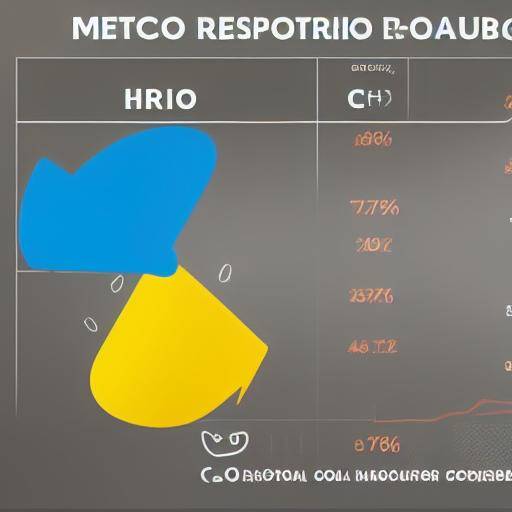
The balance between short- and long-term savings targets is essential for sound financial planning, especially when it comes to preparing for retirement. In this article, we will explore key strategies to achieve an effective balance between these goals, considering aspects such as savings, investment and risk management. From history and context to future trends and practical advice, this guide will provide a comprehensive insight into how to address this critical challenge in personal financial planning.
Introduction
Planning retirement involves setting savings goals both in the short and long term. It is essential to balance these goals effectively to ensure financial stability in the future and to enjoy a comfortable retirement. In this article, we will explore in detail how to achieve this balance effectively, considering the importance of clear objectives, sound financial planning and customized strategies. From history and context to future trends and practical advice, this guide will address every aspect of this critical challenge in personal financial planning.
History and Background
Financial planning throughout history has experienced significant developments. From the first saving records in the antiquity to the complexity of modern investment strategies, heritage management and retirement planning have been central themes in people's lives. The evolution of these concepts over time has shaped current practices of balancing short- and long-term savings goals.
Origins of financial planning
The idea of financially planning for the future has its roots in ancient civilizations that recognized the importance of economic forecasting. From saving in periods of abundance to creating funds for times of scarcity, the fundamental principles of savings and financial planning began to take shape.
Retirement as a Modern Concept
The concept of retirement as we know it today is relatively recent in the history of humanity. Throughout the centuries, work up to an advanced age was the norm, and the idea of retreating to enjoy the golden years was unknown to most people. It was in the nineteenth century when the first pensions emerged as a labor benefit to ensure financial security in old age.
Key developments in modern financial planning
With the advent of financial markets and the democratization of investment, modern financial planning has made significant progress. Investment diversification, risk management and the configuration of specific financial targets have gained importance in creating customized strategies to achieve the balance between short- and long-term savings goals.
Analysis in Deep
As financial planning strategies evolved, various views and approaches related to the balance between short- and long-term savings targets emerged.
Benefits of a balanced approach
By properly balancing short- and long-term savings goals, a number of significant benefits can be obtained. Financial coverage is ensured for short-term emergencies and unexpected expenses, while a solid financial mattress is built for retirement. This balanced approach provides financial tranquillity and reduces uncertainty about the future.
Challenges associated with the balance of short- and long-term goals
While balancing these goals can be beneficial, it also presents challenges. Risk management, market volatility and the need to adapt to unexpected changes are aspects that need to be carefully considered. An imbalance between short- and long-term savings targets can lead to a lack of preparedness for financial emergencies or a delay in the accumulation of resources for retirement.
Current trends and innovative approaches
In the current context, financial planning is experiencing new trends and innovative approaches, particularly in terms of balancing short- and long-term savings goals. Strategies such as investment diversification, savings automation and technology integration in financial management are shaping more effective ways of achieving this balance.
Exhaustive examination
The effectiveness of financial planning lies in the practical implementation of balanced strategies and approaches.
Applications and best practices
In exploring specific applications, the importance of establishing specific and measurable financial objectives emerges. The segmentation of financial assets according to short- and long-term needs allows for a more accurate and efficient allocation of resources. Establishing an automated savings plan that addresses income to different objectives, whether an emergency fund or a retirement plan, provides a solid basis for achieving an effective balance.
Perspectives and expert opinions
Financial experts offer diverse views on how to balance short- and long-term savings goals. Some emphasize the importance of discipline and consistency in savings, while others emphasize asset diversification and active risk management. The diversity of views underlines the need to explore customized approaches that align with individual circumstances and objectives.
Comparative analysis
Compare different methods and approaches to balancing short- and long-term savings goals provides a broader view of available options. The evaluation of pros and cons of strategies such as short-term investments versus long-term investments, or prioritization of emergency savings against retirement savings, provides a more informed view to making informed financial decisions.
Practical Tips and Accessible Recommendations
In seeking to achieve an effective balance between short- and long-term savings goals, it is crucial to have practical advice and actionable recommendations that guide financial decision-making.
Strategies for balancing short- and long-term goals
- Establish clear and affordable financial targets for both immediate and retirement needs.
- Automaticize savings by creating specific accounts for short- and long-term goals.
- Diversify investments by considering the time horizon and associated risk level.
Step-by-step guides and practical approaches
- Develop a detailed savings plan that includes a specific percentage for short-term savings and long-term savings.
- Use financial management tools and cost tracking to monitor progress towards established financial targets.
- Regularly adjust the allocation of resources based on changes in financial circumstances and objectives.
Detailed explanations and justifications
A deep understanding of the reasons behind the balance between short- and long-term savings goals allows for more informed decision-making. The importance of considering factors such as inflation, return of investment and unforeseen resilience justifies the need for this balance in personal financial planning.
Industry Perspectives and Expert Reviews
Industry perspectives and expert views on financial planning provide a valuable insight into current and future trends related to the balance between short- and long-term savings targets.
Implications for the future
Financial planning experts anticipate that the balance between short- and long-term savings targets will remain a central focus on personal financial management. With the evolution of markets and changing needs, strategies and tools for achieving this balance are expected to continue to develop to adapt to individual circumstances.
Emerging trends and forecasts
The role of technology in personal financial management, increasing attention to financial sustainability and innovation in investment products are emerging trends that will influence the balance between short- and long-term savings targets. The forecasts indicate that access to personalized financial information and increased diversification of financial products will play an important role in finding this balance.
Conclusions
In financial planning, the balance between short- and long-term savings targets is crucial to ensuring stability and preparedness for the future. Considering clear financial objectives, diversified investment strategies and active risk management allows us to build a solid foundation to achieve this balance effectively. By integrating practical advice and exploring different perspectives, individuals can design customized financial strategies that meet their unique needs, preparing them for a comfortable and carefree retirement.
Frequently asked questions (FAQs)
Why is it important to balance short- and long-term savings goals in financial planning?
Balancing short- and long-term savings goals is crucial to ensuring financial stability in the present and future. This allows for immediate costs and preparation for long-term needs such as retirement, providing financial tranquility and reducing uncertainty.
What are some effective strategies to balance short- and long-term savings?
Automating savings, diversifying investments based on the time horizon and establishing clear and measurable financial targets are effective strategies for balancing short- and long-term savings.
How can I adjust my financial plan to changes in my personal circumstances?
It is important to periodically review the financial plan to adjust it to changes in personal circumstances, such as changes in income, expenditure or financial targets. Flexibility and adaptability are key to maintaining an effective balance between short- and long-term savings goals.
What is the impact of technological trends on personal financial planning?
Technological trends are facilitating access to customized financial management tools, savings automation and investment diversification, which influences the effectiveness of the balance between short- and long-term savings targets.
How can I determine the appropriate proportion of short- and long-term savings?
The proportion of short- and long-term savings depends on the individual financial goals, the time horizon and the level of risk that is willing to assume. Consultation with a financial adviser can help to determine the appropriate proportion based on specific circumstances.
What role do sustainable investments play in the balance between short- and long-term savings goals?
Sustainable investments can play an important role in balancing short- and long-term savings targets by aligning financial goals with long-term and ethical considerations. Integrating sustainability criteria into investments can contribute to a more effective balance.
With this, we hope to have provided a comprehensive guide on the importance of balancing short- and long-term savings goals in financial planning, providing perspectives, practical strategies and actionable recommendations to achieve this balance effectively. If you have more questions or need personalized advice, do not hesitate to look for a professional's guidance in financial planning. Financially preparing is essential to enjoy a safe and prosperous future!






















































